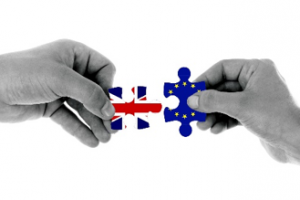
- The Future of Trademarks Registered Before 31 December 2020
The UK Intellectual Property Office (“IPO”) will automatically create a comparable UK trademarkregistrationfor EU trademarks that have been registered before 31 December 2020, without any examination. This procedure imposes no feeor administrative procedureon EU trademark owners.
The comparable UK trademark registration will have the same filing date or priority date and will cover the same goods and services as the corresponding EU trademark.
In addition, the first renewal date of the comparable trademark will be the same as that of the corresponding EU trademark. The trademark owner will need to pay separate renewal fees both to the EUIPOand the IPO for a renewal.
Trademarks that have acquired a well-known status in the EU before 31 December 2020 will still be able to enjoy their well-known status in the UK until this date. The trademark owner will thereafter have to prove that the trademark is well-known in the UKin order to be able to continue benefitting from this status in this territory.
EU trademark owners will also not need to appoint a trademark attorney/representative in the UK until three years after 31 December 2020.
- Applications for EU Trademarks Still Pending on 31 December 2020
The applicants of EU trademark applications that are still pending on 31 December 2020 will benefit from a priority right to file the same trademark application before the IPO within nine months following the end of the transition period. This application will have the same filing date and will cover the same goods and services as its corresponding EU trademark.
- Trademark’s use
Under UK law, trademarks that have not been in use for a full period of 5 years from their registration date are vulnerable to cancellation. This will still apply to trademarks that will be created on the basis of EU trademarks after 31 December 2020.
However, where this 5-year period includes a period before 31 December 2020, use of the trademark in the EU will be taken into account regardless of whether this use is in the UK or not. Where this 5-year period includes any period after 31 December 2020, the trademark will need to be used in the UK.
- Registered Design Rights
Similarly to the case with trademarks, the IPO will automatically create a comparable UK design registration for Community designs that have been registered before 31 December 2020, without any examination. This new registration will have the same priority and registration date. It will also have the same renewal date as its corresponding EU right. This procedure aims to impose no additional fees or administrative burdens on the right holders.
- The case of deferred designs in the process of being registered as at 31 December 2020
Designs in the EU are often registered once they have been published, but publication may be deferred for up to 30 months from the filing date. A registered design whose publication is deferred until 31 December 2020 will be treated as a pending application.
This means that the holder of a design can retain the same filing and priority dates in the UK by filing a corresponding design registration application within nine months of 31 December 2020. This application will not be subject to further examination by the IPO.
To sum up, Brexit will have a certain impact on the owners of intellectual property rights related to trademarks and designs registered with theEUIPO. Although the main objective is to maintain the status quo for right holders after Brexit, right holders will still need to review their portfolio of intellectual property rights to ensure their continuation in the UK following Brexit.

